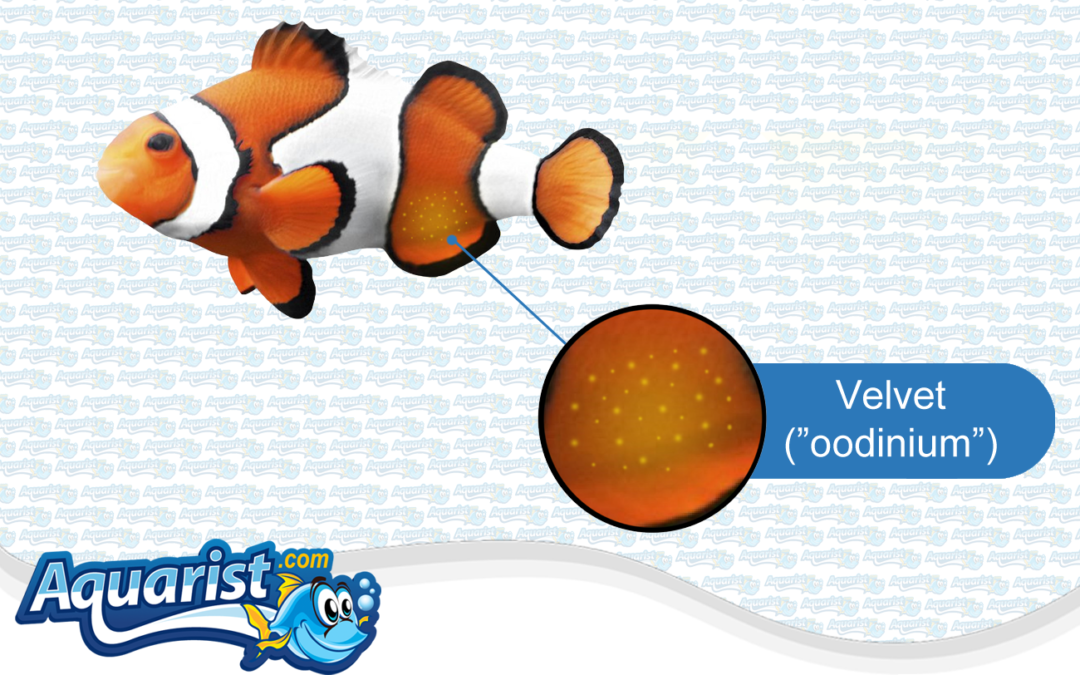Comprehensive Guide to Fish Disease: Velvet
Velvet, also known as "Gold Dust Disease" or "Rust Disease," is a common and highly contagious parasitic infection that affects both freshwater and saltwater fish. It is caused by a protozoan parasite, Piscinoodinium in freshwater and Amyloodinium in saltwater. Velvet can be fatal if not treated quickly, making early detection and proper management crucial for fish health. This guide provides an in-depth look at Velvet disease, including its causes, symptoms, treatment options, and preventive measures.
What is Velvet Disease?
Velvet disease is a parasitic infection caused by dinoflagellate parasites that attach to the skin, gills, and fins of fish. The parasites feed on the host's cells, causing irritation and damage. As the infection progresses, the fish's skin may appear to be covered in a fine, dusty coating that resembles gold or rust-colored velvet, giving the disease its name.
Causes of Velvet Disease
Several factors can contribute to the development and spread of Velvet disease in aquarium fish:
- Introduction of infected fish or plants: Bringing new fish or plants into the tank without proper quarantine can introduce the parasite to the aquarium.
- Poor water quality: High levels of ammonia, nitrite, or nitrate can weaken fish and make them more susceptible to infections.
- Stress: Fish that are stressed due to overcrowding, improper handling, or sudden changes in water temperature are more vulnerable to Velvet disease.
- Weak immune system: Fish with weakened immune systems are less able to fight off parasitic infections.
Symptoms of Velvet Disease
Recognizing the symptoms of Velvet disease early is essential for effective treatment. Look out for the following signs:
- Fine, dusty coating: The most distinguishing symptom is a gold or rust-colored coating on the fish's skin, gills, or fins, resembling velvet or dust.
- Rapid gill movement: Infected fish may breathe rapidly due to gill irritation.
- Rubbing against objects: Fish may scratch themselves against rocks, plants, or tank decorations in an attempt to remove the parasite.
- Lethargy: Fish may become less active and spend more time at the bottom of the tank.
- Loss of appetite: Infected fish may show little interest in food and may stop eating altogether.
- Clamped fins: Fish may hold their fins close to their body due to discomfort.
Diagnosing Velvet Disease
Diagnosing Velvet disease involves observing the symptoms and, if necessary, conducting a microscopic examination of the affected fish's skin or gills to confirm the presence of the Piscinoodinium or Amyloodinium parasite. In most cases, the characteristic gold or rust-colored dusting on the skin is a strong indicator of Velvet.
Treatment of Velvet Disease
Treating Velvet disease promptly is crucial for the survival of the affected fish. The following steps can help you manage and treat this parasitic infection:
- Isolate the infected fish: Move the infected fish to a quarantine tank to prevent the spread of the parasite to other fish in the main tank.
- Raise the water temperature: Gradually increase the water temperature to 82-86°F (28-30°C) to speed up the parasite's life cycle, making it more vulnerable to treatments.
- Dim the aquarium lights: Velvet parasites are photosynthetic, so reducing light exposure can help slow their growth.
- Use copper-based medications: Copper-based treatments are highly effective against Velvet. Follow the medication instructions carefully and monitor copper levels to avoid toxicity.
- Salt treatments: Adding aquarium salt (for freshwater tanks) or increasing salinity (for saltwater tanks) can help alleviate symptoms and reduce stress. Use salt treatments with caution, as not all fish tolerate salt well.
- Medicated baths: Medicated dips or baths with formalin, acriflavine, or malachite green can be used to directly treat the affected fish.
Preventing Velvet Disease
Prevention is the best approach when dealing with Velvet disease. Here are some steps to help reduce the risk of an outbreak in your aquarium:
- Quarantine new fish and plants: Quarantine new fish for at least 2-4 weeks before introducing them to the main tank to ensure they are free of parasites. Plants can also be quarantined or treated with anti-parasitic dips before being added to the aquarium.
- Maintain optimal water quality: Regularly test and monitor water parameters, including ammonia, nitrite, nitrate, and pH levels. Perform regular water changes to keep the tank clean and stable.
- Reduce stress: Avoid sudden changes in water temperature, overcrowding, or aggressive tank mates that can stress fish and weaken their immune system.
- Use UV sterilizers: UV sterilizers can help kill free-swimming parasites, reducing the risk of infection.
- Provide a balanced diet: Feed your fish high-quality food and a varied diet to boost their immune system.
Pro Tips for Managing Velvet Disease
- Act quickly: Velvet is a fast-acting parasite, so early detection and treatment are essential to save affected fish.
- Monitor copper levels: When using copper-based treatments, regularly test copper levels to avoid overdosing, which can be harmful to fish and invertebrates.
- Maintain a dark environment: Dim lights during treatment to slow the parasite's photosynthetic process.
- Disinfect equipment: Clean any nets, decorations, or other items used in the tank to prevent the spread of the parasite.
Understanding the Life Cycle of Velvet Parasites
Understanding the life cycle of Velvet parasites is essential for effective treatment. The parasite goes through several stages:
- Trophont stage: The parasite attaches to the fish's skin or gills and feeds on the host's cells. This is the stage where the "velvet" appearance becomes visible.
- Tomont stage: The parasite detaches from the host and encysts, falling to the substrate. During this phase, it undergoes division and produces multiple infective cells (dinospore).
- Dinospore stage: The free-swimming dinospores search for a new host. If they do not find a host within a few days, they will die. Increasing the water temperature can speed up this cycle, making the dinospores more vulnerable to medication.
Conclusion
Velvet disease is a serious parasitic infection that can quickly become fatal if not treated promptly. Early detection, isolation of infected fish, and the use of effective treatments such as copper-based medications and salt treatments can help manage the disease. Prevention is key to keeping Velvet at bay, so always quarantine new arrivals, maintain good water quality, and minimize stress in your aquarium. With the right approach, you can protect your fish from Velvet and maintain a healthy and thriving tank environment.

